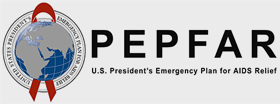Dedicated warehousing, transportation, waste management, and IT professionals work to achieve the USAID Global Health Supply Chain Program-Procurement and Supply Management (GHSC-PSM) project's mission of providing an uninterrupted supply of the highest quality health commodities delivered on time for an efficient cost. Our global health supply chain uses a fourth party logistics (4PL) model to ensure access to a broader base of potential logistics providers, increased market transparency, reduced procurement costs and order cycle times, and greater backend integration and electronic data interchange.
Our teams secure:
- end-to-end optimization and data visibility with the right combination of suppliers and partners to secure access and competition;
- the right mix of regional distribution center locations for minimizing transportation costs; and
- reduced negative environmental impacts by improving health care waste management



